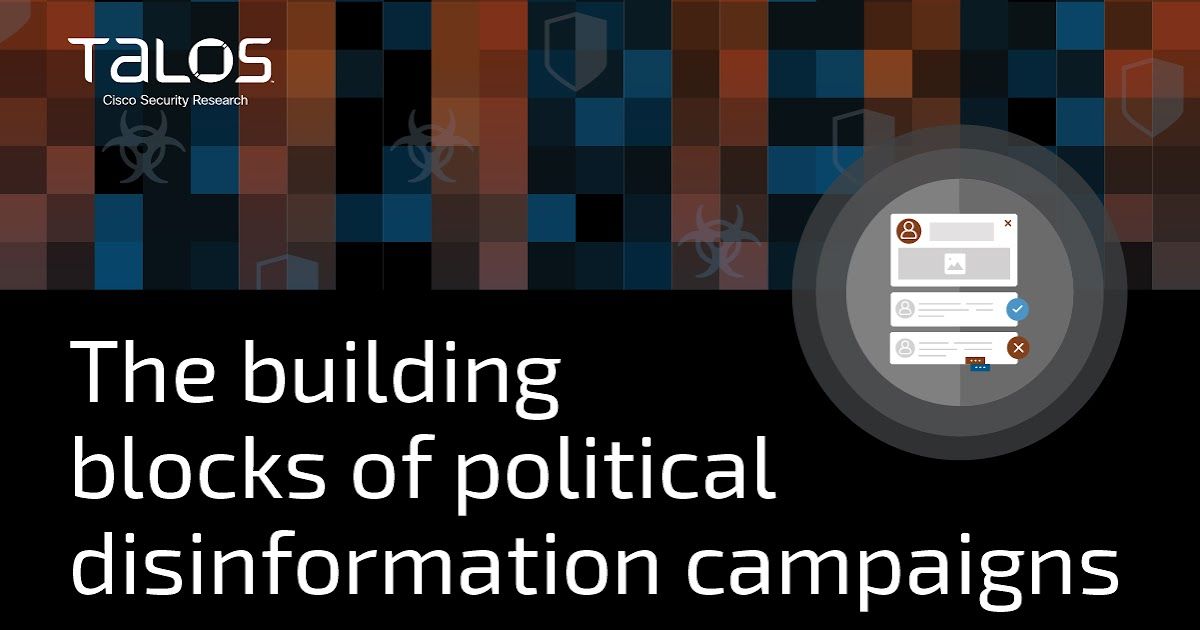By Nick Biasini, Kendall McKay and Matt Valites.
Editor's note: Related reading on Talos election security research:
- /what-to-expect-when-youre-electing
- /election-roundtable-video
- /what-to-expect-electing-disinformation-building-blocks
As Cisco Talos discovered during our four-year investigation into election security, securing elections is an extremely difficult, complex task. In the first paper in our election series, “What to expect when you’re electing,” Talos outlined how the key geopolitical objective of our adversaries is to weaken the faith the world has in Western-style democracy. One component of these objectives is disinformation.
While disinformation operations have existed throughout history, they have become a global problem in recent years, affecting various levels of government and society in many countries around the world. Threats actors are increasingly using such campaigns to influence elections, which can result in significant consequences with lasting effects. In today’s digital age, the internet has made it easy for people to create, manipulate, and post content with few restrictions on the material’s veracity, creating an environment in which it is increasingly difficult to tell fact from fiction. When used in combination with modern technology, deceptive messaging can be distributed to curated audiences anywhere in the world in real-time. As part of our continued look into the state of election security ahead of the 2020 U.S. presidential election, we’re releasing our next research paper, titled “The building blocks of political disinformation campaigns.” This paper builds on the previous report by focusing on the infrastructure supporting these complex campaigns. In this report, we examine the major types of players involved, the tools and tactics they use to organize and carry out their operations, and how they attempt to avoid detection on common social media platforms. We also make several assessments about actor behavior and the future threat landscape to help audiences better understand the challenges that lie ahead.
You can download the full report here. Stay tuned for the next entry in our election series where we’ll take a look at the psychology behind disinformation and what we can do to stem the spread of fake news.
